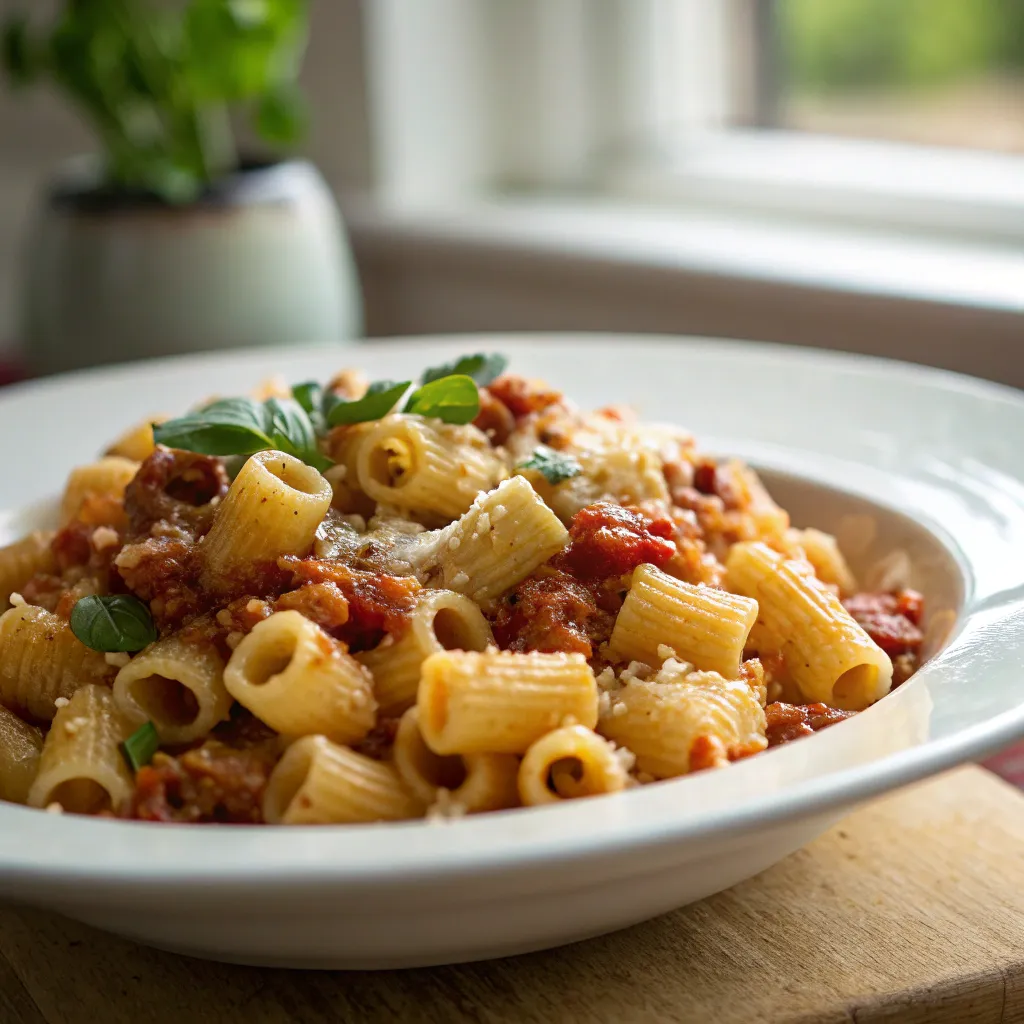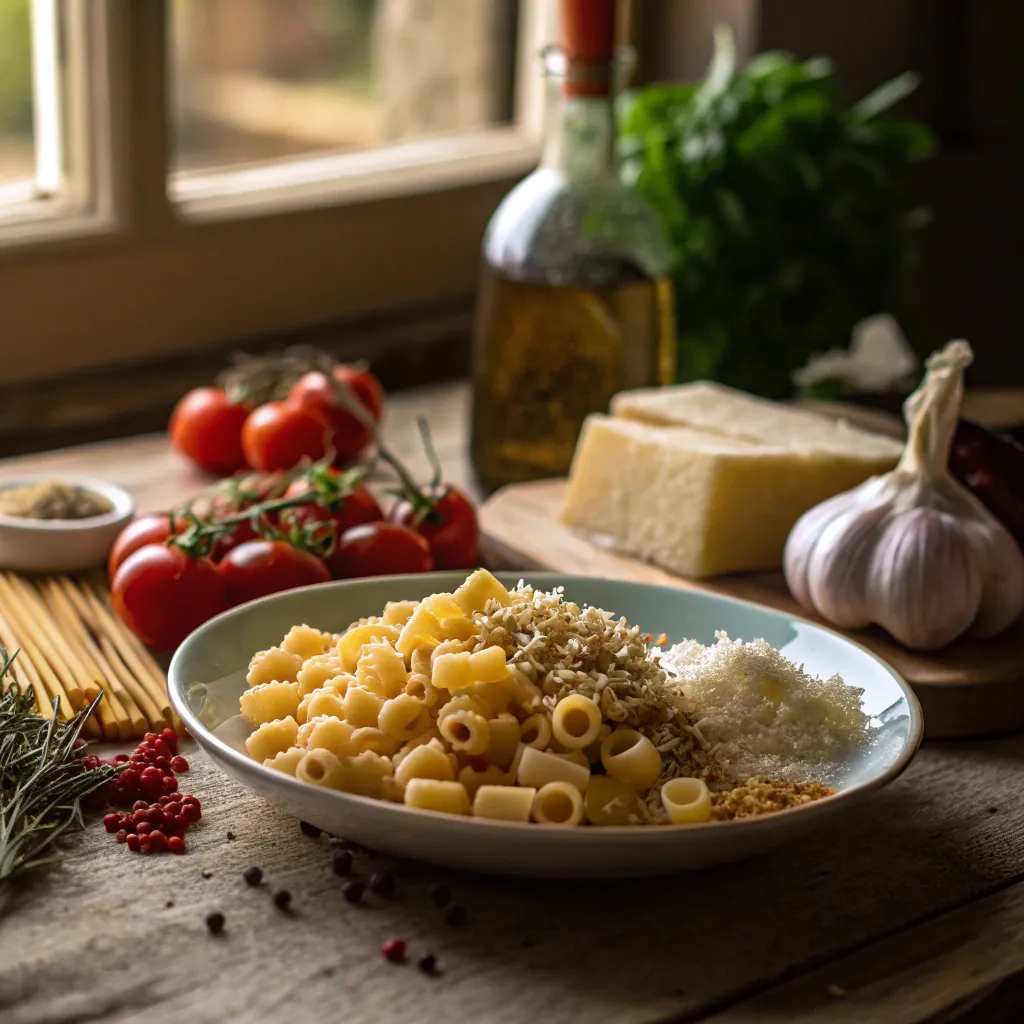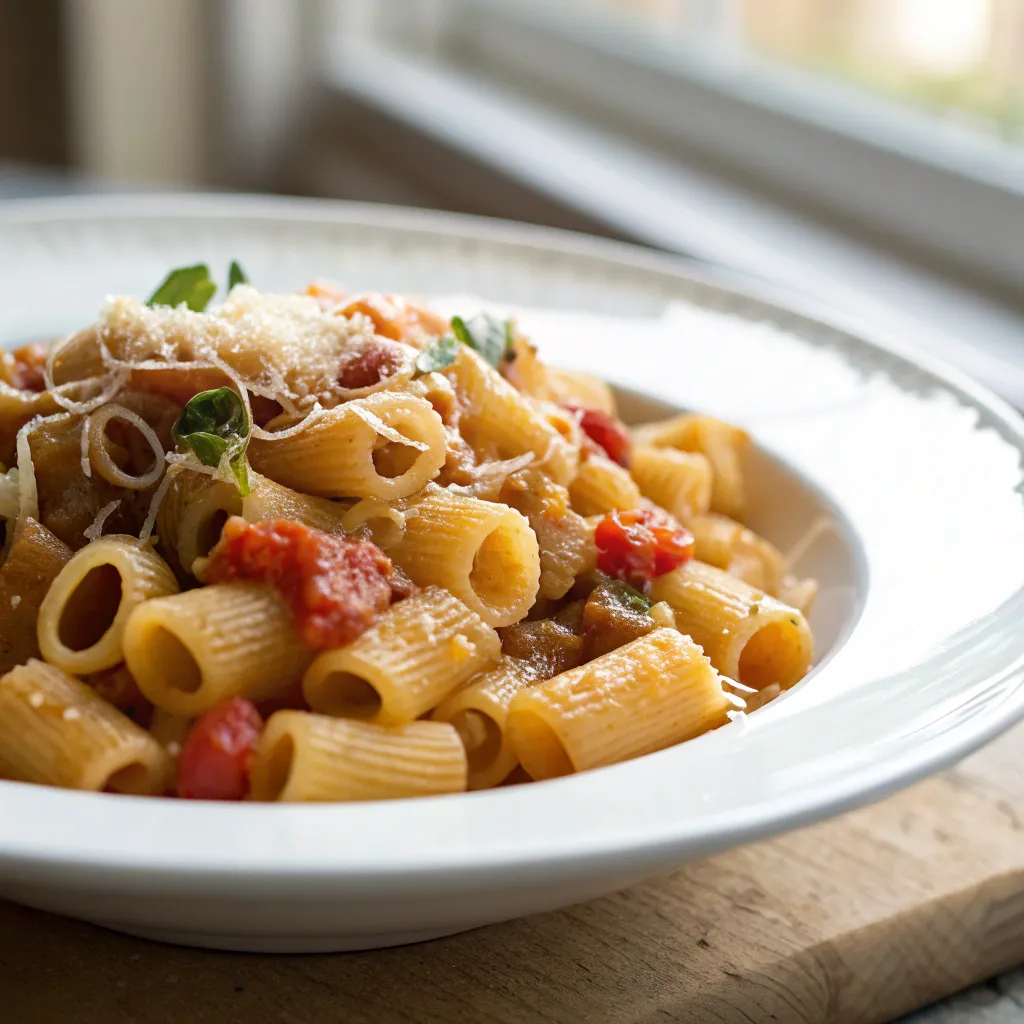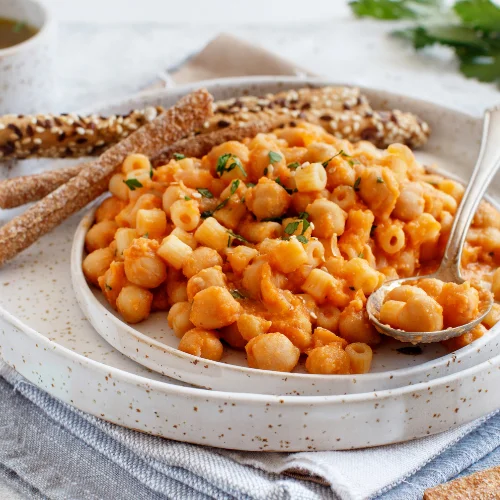This guide unlocks the process for preparing outstanding ditalini pasta using only three short instructions. The recipe uses fresh elements of olive oil, butter, and parmesan cheese to create a flavorful dish with excellent textures. The creamy ditalini pasta sauce will create a smooth texture on perfectly cooked pasta. This quick-crafting meal serves as a fantastic selection for rushed daily activities. The straightforward breakdown results in cooking extraordinary ditalini pasta, which delivers yummy comfort food without complicated preparations. The delightful combination in this recipe will transform your daily pasta meals and create the ideal dinner experience for today.
Table of Contents
Key Benefits for ditalini pasta recipe

Time Efficiency:
This ditalini pasta recipe is crafted for those who value speed and simplicity. You can prepare a delicious meal in minutes with only three straightforward steps. The process is streamlined to eliminate unnecessary actions, so you spend less time cooking and more time enjoying your meal. Quick boiling of the pasta and swift preparation of a rich, creamy sauce ensure that every minute counts. This efficient method is perfect for busy weeknights, allowing even beginner cooks to create a satisfying, restaurant-quality dish quickly and confidently. Enjoy a seamless cooking experience every time you try this fantastic recipe.
Rich Flavor & Texture:
The combination of olive oil, butter, and parmesan cheese creates a luscious, creamy sauce that perfectly coats each ditalini. This recipe highlights the natural taste of fresh ingredients while offering a delightful twist in every bite. The pasta’s firm yet tender texture complements the sauce, making each forkful a balance of flavor and satisfaction. A quick stir brings all components together, allowing the sauce to cling to the pasta evenly. Enjoy the blend of savory and creamy notes that make this dish a memorable culinary experience for anyone who loves well-crafted meals and delights in every bite.
Versatility & Convenience:
This recipe adapts to various tastes and occasions. Whether adding grilled chicken or sautéed vegetables or enjoying a vegetarian dish, the simple method works well with any twist. It is ideal for quick lunches, family dinners, or meal-prep plans. The dish stores easily in an airtight container and reheats beautifully, preserving its rich flavor and texture. Its flexibility makes it a staple in your cooking routine, providing a satisfying meal option whenever you need a delicious, hassle-free dish that fits your lifestyle perfectly. Experience unmatched ease and endless creative meal options today.
Ingredients

This section outlines the essential ingredients to create the best ditalini pasta recipe. Each component is carefully selected to build a dish that is both creamy and full of flavor. Organizing your ingredients in a list makes preparation simple and ensures you have everything you need. Below is a detailed breakdown:
Essential Ingredients:
- 200 grams of ditalini pasta:
This small tubular pasta is perfect for capturing every bit of the sauce. Its shape helps hold the creamy mixture, ensuring each bite is flavorful. Choose a brand that cooks to an al dente texture to remain firm yet tender in boiling salted water. - 2 tablespoons of extra virgin olive oil:
Olive oil adds a light, fresh flavor to the dish. It also helps prevent the pasta from sticking and serves as the base for sautéing additional ingredients. - 3 tablespoons of unsalted butter:
Butter is crucial for creating a rich, smooth sauce. When melted slowly, it blends beautifully with the olive oil to form the perfect base for a creamy finish. - 1 cup of freshly grated Parmesan cheese:
Freshly grated Parmesan offers a nutty, savory note and works as a thickener for the sauce as it melts. It integrates more smoothly into the dish compared to pre-shredded varieties, ensuring an even distribution of flavor. - ½ cup of heavy ream (optional):
This ingredient is optional but highly recommended if you desire an extra layer of creaminess. It enhances the sauce’s velvety texture and adds depth to the overall flavor. - 1 teaspoon of salt:
Salt elevates the natural flavors of the ingredients. Use it in both the pasta water and the sauce to balance the dish. - A generous pinch of cracked black pepper:
This adds a subtle heat and aroma that complements the creaminess of the sauce. - 1 cup of reserved pasta water:
This starchy water is essential to adjust the sauce’s consistency. Adding it gradually helps the sauce adhere to every piece of pasta perfectly.
Optional Additions:
- Diced cooked chicken:
For those seeking extra protein, add chicken to transform the dish into a more substantial meal. - Sautéed vegetables (e.g., bell peppers, spinach):
Vegetables add color, nutrition, and a delightful twist to the classic recipe.
By arranging these ingredients in an easy-to-read list, you can quickly ensure that everything is ready before you start cooking. This organization is key to executing the recipe flawlessly and enjoying every step of creating a delightful ditalini pasta dish.
Instructions

- Prepare the Pasta:
In a large pot, fill water and add a generous pinch of salt. Bring the water to a rolling boil. Once boiling, add 200 grams of ditalini pasta. Stir gently to prevent sticking. Allow the pasta to cook until it reaches an al dente texture, which typically takes 8 to 10 minutes. As the pasta cooks, stir occasionally for even cooking. Before draining the pasta, set aside 1 cup of the starchy cooking water. Drain the pasta and set it aside in a warm bowl.
2. Create the Creamy Sauce:
Place a large skillet over medium heat. Pour in 2 tablespoons of extra virgin olive oil. Add three tablespoons of unsalted butter and let it melt slowly. If you choose a more decadent sauce, incorporate ½ cup of heavy cream at this point. Stir the mixture continuously until the cream blends smoothly with the butter and olive oil. Lower the heat slightly to prevent the mixture from boiling, which keeps the sauce smooth.
Gradually add 1 cup of freshly grated Parmesan cheese while stirring. This helps the cheese melt evenly, creating a thick, velvety sauce. Season the sauce with one teaspoon of salt and a generous pinch of cracked black pepper. If the sauce is too thick, gradually stir in small amounts of the reserved pasta water to adjust the consistency.
3. Combine Pasta and Sauce:
Transfer the drained pasta to the skillet with the creamy sauce. Gently toss the pasta until every piece is well-coated. Continue stirring on low heat for an extra minute or two so that the flavors blend together thoroughly. Taste the dish and adjust the seasoning if needed. The pasta should have a smooth coating of the sauce, with each bite capturing the rich flavor of Parmesan and the subtle kick of black pepper.
4. Final Touches and Serving:
Once the pasta and sauce are well combined, remove the skillet from the heat. Serve the ditalini pasta immediately on a warm plate. This ensures that the pasta maintains its texture and the sauce remains creamy. Enjoy your meal while it is fresh, and appreciate the simple yet satisfying process that creates a delicious, restaurant-quality dish right at home.
Pro Tips and Variations
Cooking Tips:
For a flawless dish every time, start by ensuring your pasta water is well-salted. This enhances the flavor of the ditalini and sets the stage for a well-seasoned meal. When cooking the pasta, stir occasionally to prevent clumping, and remember to reserve a cup of pasta water before draining. This starchy liquid is essential for adjusting your sauce’s consistency without thinning out the flavor. Use medium heat when melting butter and combining the cream, oil, and cheese to avoid burning or overcooking.
Sauce Adjustments:
If you prefer a thicker sauce, allow it to simmer gently for a couple of minutes after adding the cheese. Conversely, for a looser consistency, gradually add reserved pasta water until you achieve your desired texture. Experiment with the ratio of heavy cream to Parmesan cheese to find the perfect balance that suits your palate. A splash of extra cream can transform the dish into an even more luxurious experience while reducing the cream, resulting in a lighter version that still packs a punch.
Variations:
Enhance your ditalini pasta by adding additional ingredients that match your taste—for protein lovers, diced grilled chicken or crumbled Italian sausage work beautifully. Vegetarians might enjoy a mix of sautéed spinach, mushrooms, or sun-dried tomatoes. A dash of garlic added early on with the olive oil, can intensify the overall flavor. For an unexpected twist, try sprinkling finely chopped basil or oregano over the finished dish to introduce a hint of herbaceous freshness.
Each of these tips and variations is designed to help you tailor the recipe to your liking, ensuring that every bite of your ditalini pasta is both comforting and full of flavor. Enjoy experimenting and making this dish your own!
Serving Suggestions
When serving your best ditalini pasta dish, consider pairing it with sides that elevate the meal without overpowering its creamy texture. A warm, crusty bread or a slice of garlic bread is a classic option. The bread helps soak up any extra sauce while adding a delightful crunch to every bite.
For a balanced plate, serve a crisp green salad with a simple vinaigrette. A mix of fresh lettuce, cherry tomatoes, cucumbers, and thinly sliced red onions adds brightness and a refreshing contrast. Alternatively, a lightly dressed arugula salad or an Italian chopped salad with olives and a touch of basil works wonderfully.
Roasted vegetables such as broccoli, zucchini, or bell peppers are excellent for adding color and extra nutrition. Their natural sweetness and slight char can highlight the savory notes of the pasta dish.
If you enjoy soups, a small bowl of minestrone or a light broth-based soup can serve as a great starter or side. For an extra touch, offer a sprinkle of freshly grated Parmesan or a drizzle of olive oil on top, along with cracked black pepper or chopped herbs like parsley or basil. These simple additions enhance the dish while keeping the focus on the smooth, creamy flavor of your ditalini pasta.
Conclusion
This ditalini pasta recipe proves that simplicity can yield exceptional flavor and texture. Every step—from boiling the pasta to blending a rich, creamy sauce—has been designed for both ease and delicious results. The balance of olive oil, butter, and freshly grated Parmesan creates a sauce that clings perfectly to the tender ditalini, while the reserved pasta water ensures a smooth consistency that enhances every bite.
This recipe is a versatile base, inviting you to experiment with additional ingredients such as sautéed vegetables or lean proteins for a wholesome meal. It is perfect for busy weeknights and adaptable for meal prepping, guaranteeing a comforting dish every time. Whether enjoyed on its own or paired with a crisp salad and crusty bread, this recipe is a quick and satisfying solution that brings a classic Italian touch to your table. Enjoy the effortless combination of taste and convenience in every serving.
FAQs
What can I do with ditalini pasta?
Ditalini pasta is highly versatile and works well in a variety of dishes. It is commonly found in soups like minestrone, where its small, tube-like shape absorbs flavors well. You can also use it in pasta salads, combining it with fresh vegetables, olive oil, and a light dressing for a refreshing meal. Ditalini pairs well with creamy sauces, making it an excellent base for macaroni and cheese-style dishes. Additionally, it works well in baked pasta casseroles and as a side dish with garlic butter and Parmesan cheese.
What is the difference between ditalini and ditalini pasta?
Ditalini and ditali pasta look similar but have distinct differences. Ditalini is smaller, with short, thin tubes often used in soups or creamy dishes. Ditali, on the other hand, is slightly larger and thicker, making it more suitable for heartier sauces and baked dishes. While they can sometimes be used interchangeably, ditalini is preferred for soups and salads, whereas ditali is ideal for more substantial pasta dishes.
What are the ingredients in ditalini pasta?
Traditional ditalini pasta is made from durum wheat semolina and water. Some variations, such as whole wheat or gluten-free ditalini, may include alternative ingredients like brown rice flour or quinoa flour. When making a dish with ditalini, the ingredients vary based on the recipe. A basic creamy ditalini pasta may include butter, olive oil, garlic, Parmesan cheese, heavy cream, and seasoning. Additional ingredients such as vegetables, chicken, or pancetta can enhance flavor and texture.
Why is it called “marry me pasta”?
“Marry Me Pasta” is a popular dish named for its rich, creamy, and flavorful sauce, which is said to be so delicious that it could inspire a marriage proposal. The dish typically includes a creamy tomato-based sauce with garlic, sun-dried tomatoes, Parmesan cheese, and herbs. While ditalini pasta is not traditionally used in “Marry Me Pasta,” it can be substituted to create a unique twist on the recipe. The name reflects the irresistible taste and comforting quality of the dish, making it a favorite for romantic dinners or special occasions.
These frequently asked questions provide insight into ditalini pasta’s versatility, origins, and ingredient options. Whether you’re making a simple soup or a creamy pasta dish, understanding these details can help you create delicious meals with confidence.



